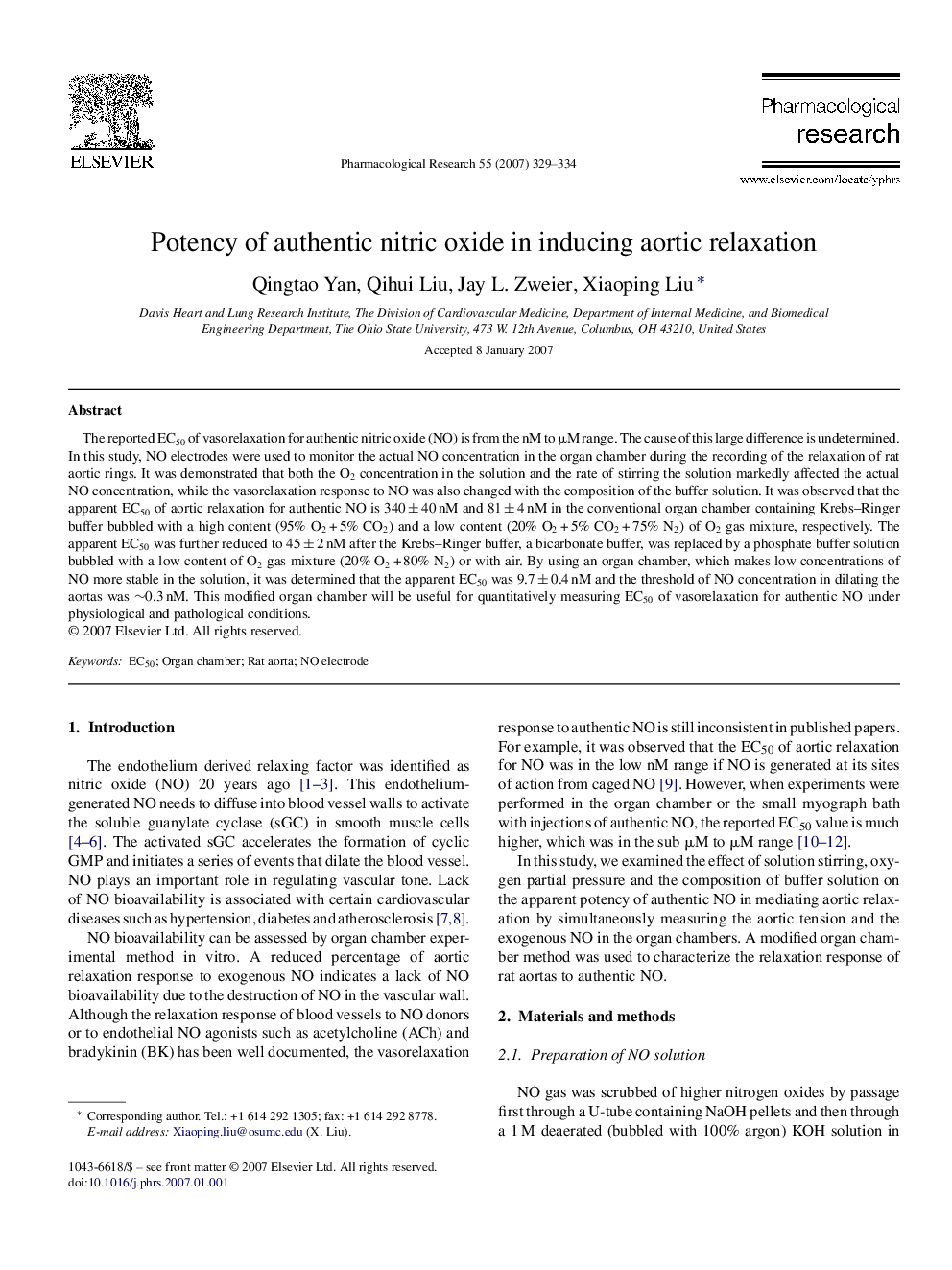| Article ID | Journal | Published Year | Pages | File Type |
|---|---|---|---|---|
| 2562471 | Pharmacological Research | 2007 | 6 Pages |
The reported EC50 of vasorelaxation for authentic nitric oxide (NO) is from the nM to μM range. The cause of this large difference is undetermined. In this study, NO electrodes were used to monitor the actual NO concentration in the organ chamber during the recording of the relaxation of rat aortic rings. It was demonstrated that both the O2 concentration in the solution and the rate of stirring the solution markedly affected the actual NO concentration, while the vasorelaxation response to NO was also changed with the composition of the buffer solution. It was observed that the apparent EC50 of aortic relaxation for authentic NO is 340 ± 40 nM and 81 ± 4 nM in the conventional organ chamber containing Krebs–Ringer buffer bubbled with a high content (95% O2 + 5% CO2) and a low content (20% O2 + 5% CO2 + 75% N2) of O2 gas mixture, respectively. The apparent EC50 was further reduced to 45 ± 2 nM after the Krebs–Ringer buffer, a bicarbonate buffer, was replaced by a phosphate buffer solution bubbled with a low content of O2 gas mixture (20% O2 + 80% N2) or with air. By using an organ chamber, which makes low concentrations of NO more stable in the solution, it was determined that the apparent EC50 was 9.7 ± 0.4 nM and the threshold of NO concentration in dilating the aortas was ∼0.3 nM. This modified organ chamber will be useful for quantitatively measuring EC50 of vasorelaxation for authentic NO under physiological and pathological conditions.
